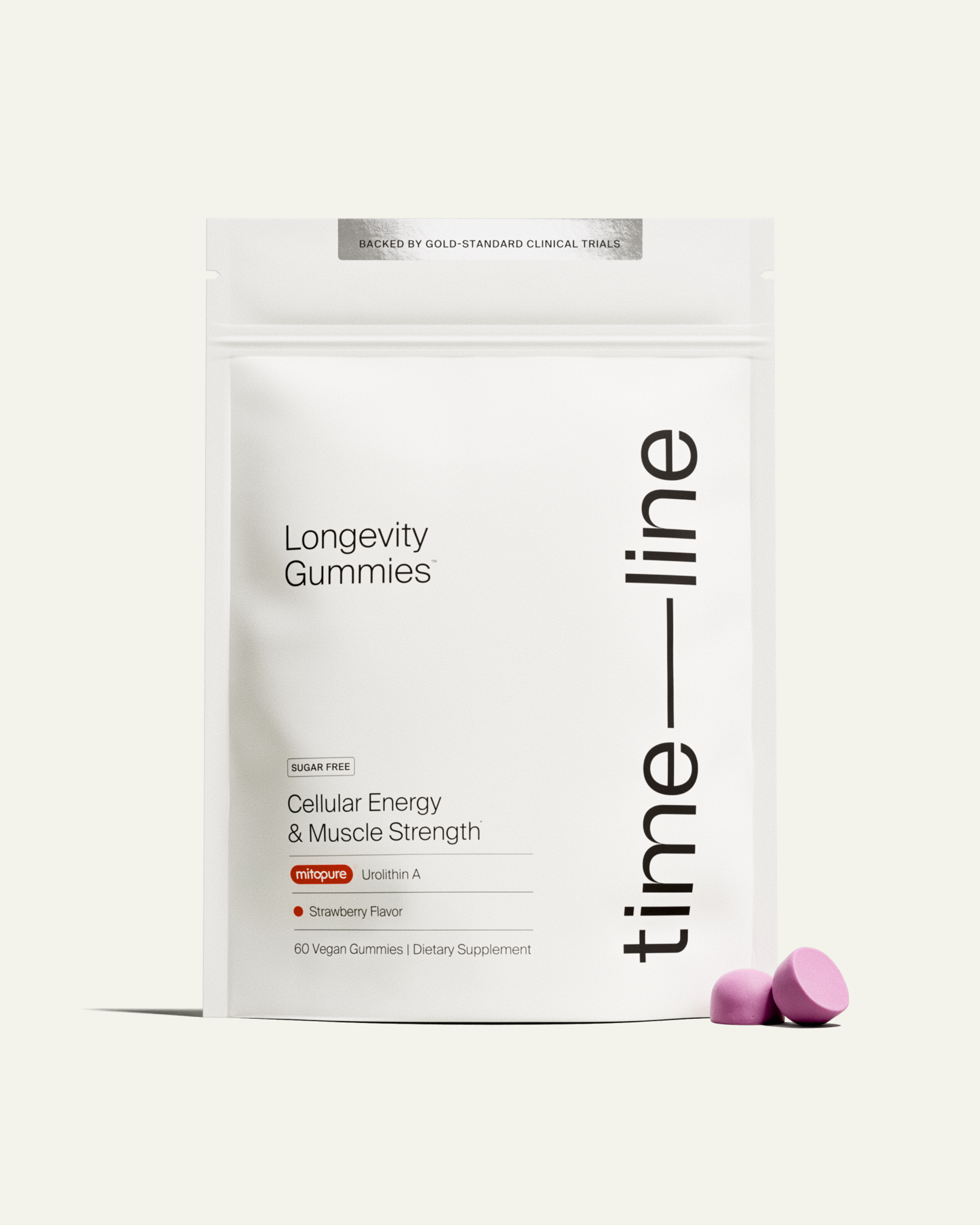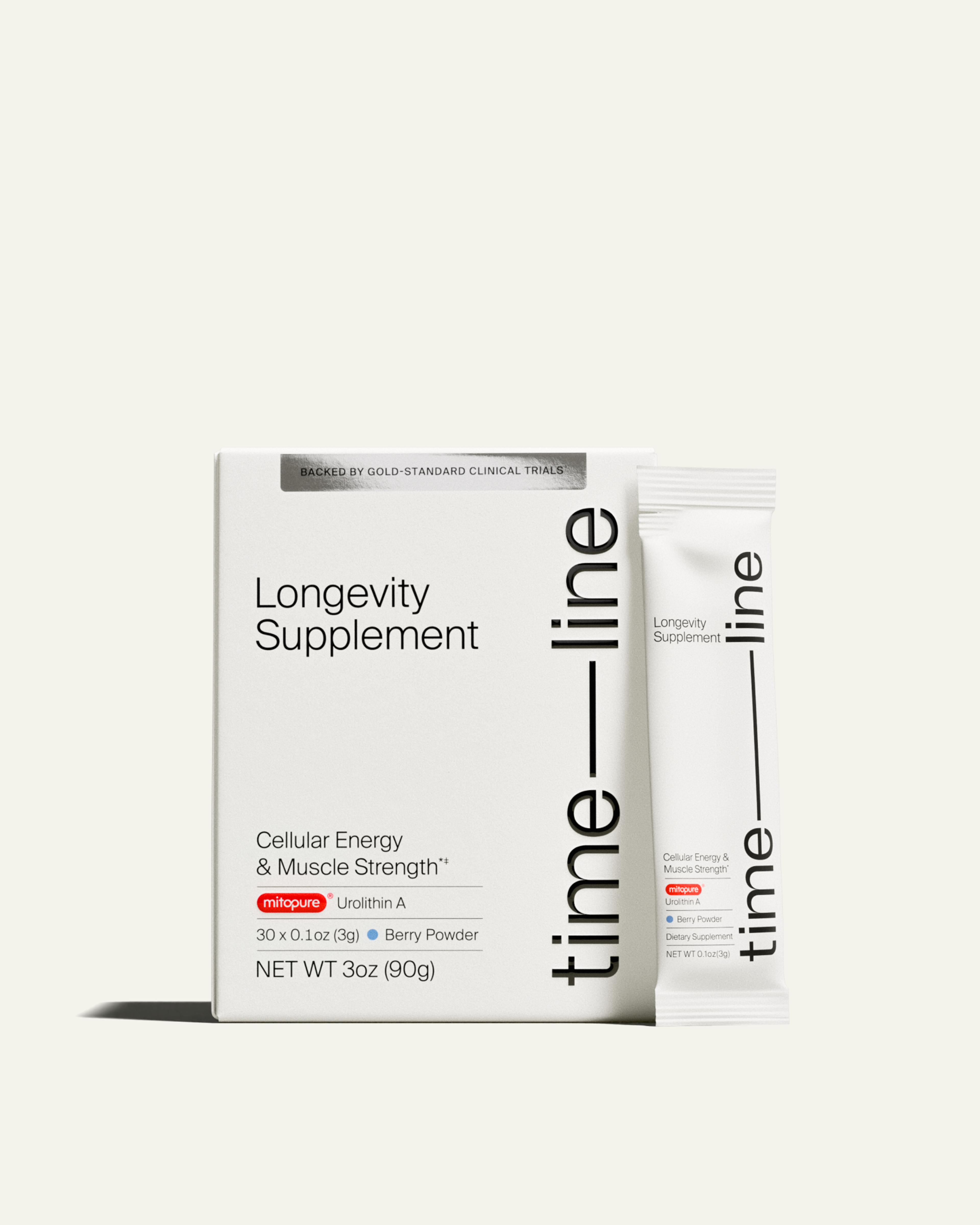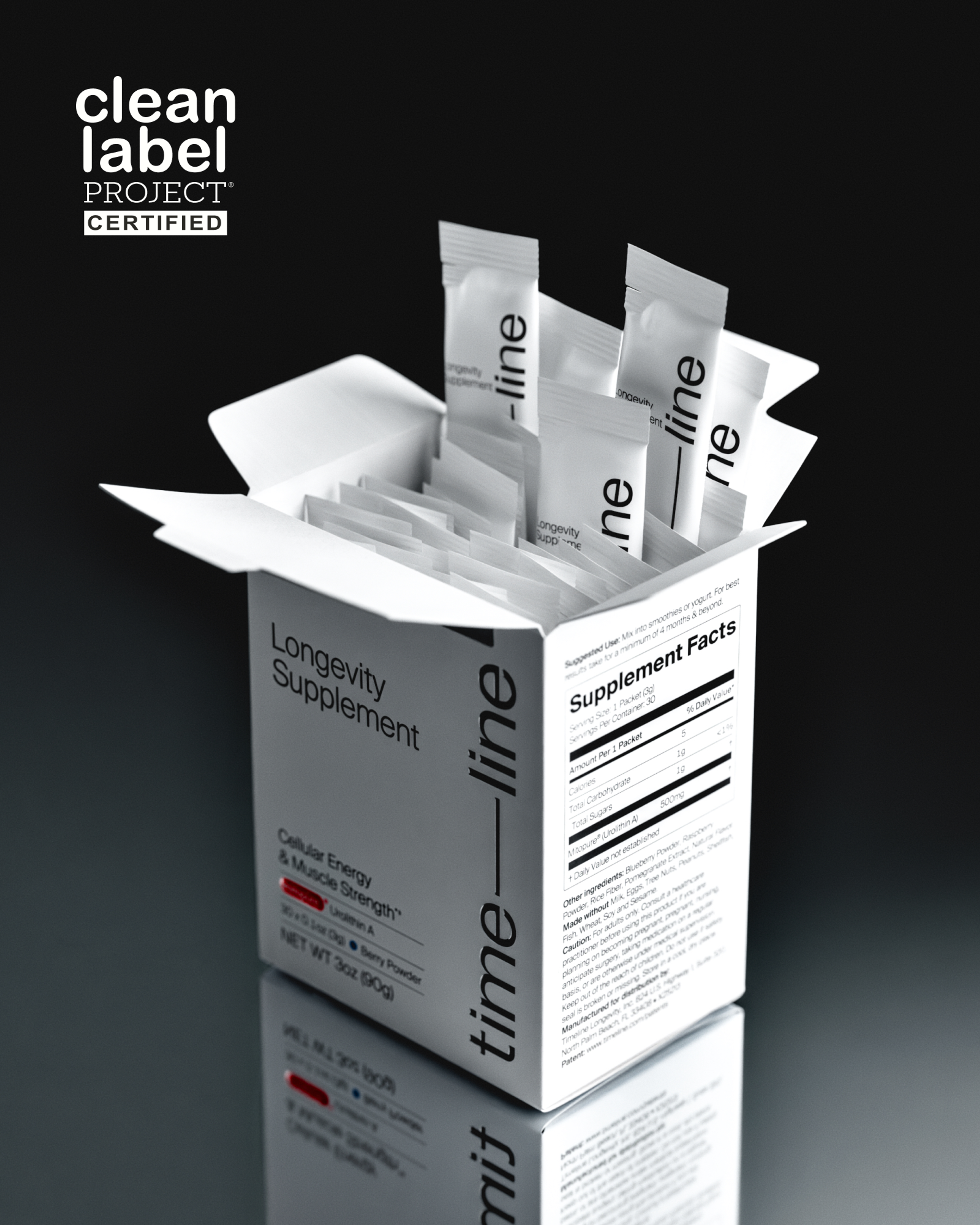Combating Age-Related Muscle Loss for Strength and Longevity
Age-related muscle loss is a natural process, but you can fight back with the right diet, exercise, and supportive supplements.
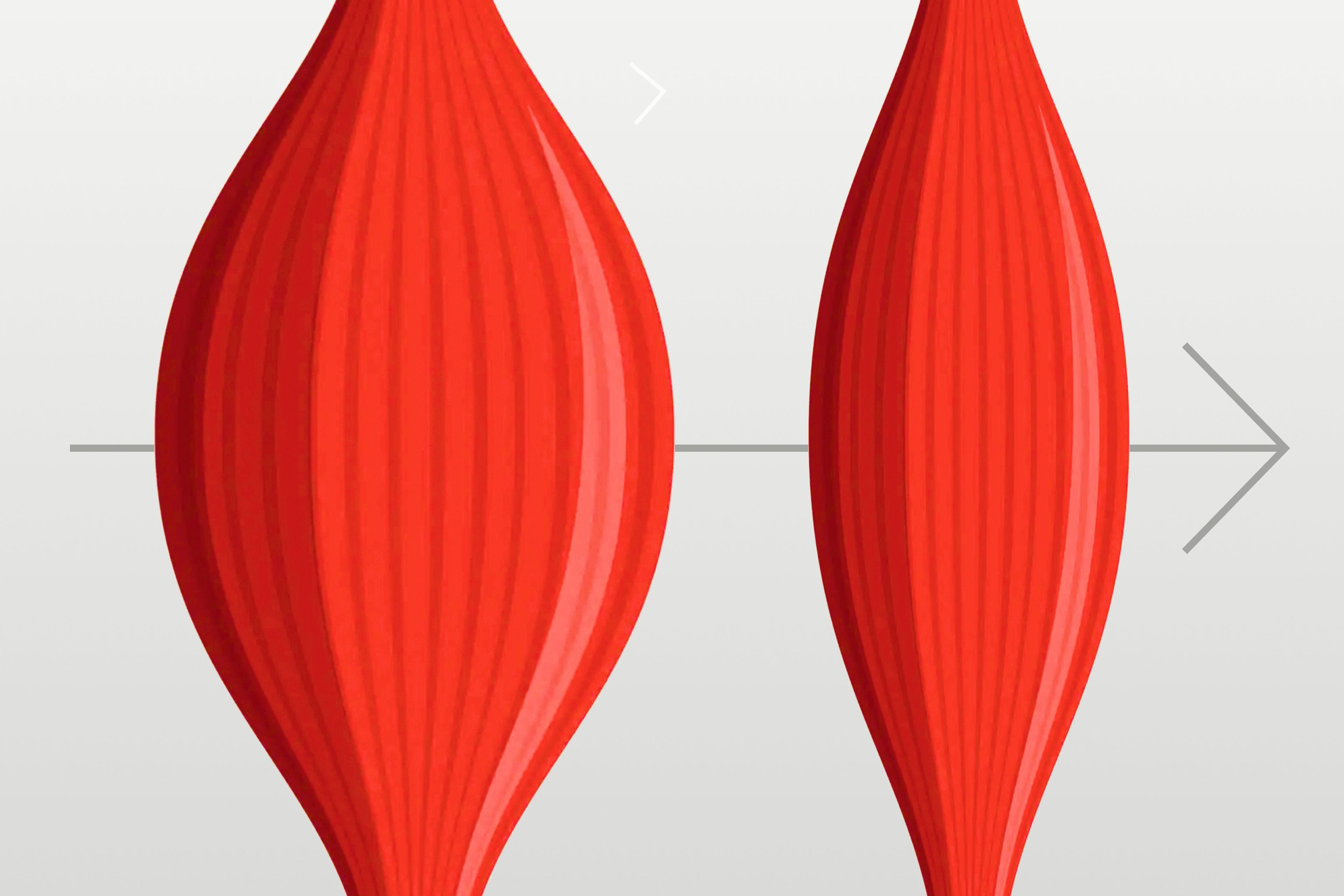
What to know
Age-related muscle loss is a natural process, but reduced physical activity, inadequate protein intake, and hormonal changes can accelerate it.
Regular exercise, especially strength training, and a protein-rich diet can help prevent muscle decline and even rebuild lost muscle mass.
Mitochondrial health and hormone balance play key roles in muscle preservation, with supplements like Urolithin A offering additional support.
Measuring body composition, including muscle mass, is essential for tracking progress and understanding your muscle health.
Small, sustainable lifestyle changes—like prioritizing protein or adding enjoyable exercises—can lead to significant improvements in muscle strength and overall longevity.
As we age, maintaining strength and mobility becomes essential for living a healthy, vibrant life. One common challenge many people face is age-related muscle loss, known as sarcopenia. This condition results in a gradual decline in muscle mass and function, impacting everything from energy levels and metabolism to overall well-being.
By understanding why you experience muscle loss with age, how it happens, and the steps you can take to reduce it, you can preserve your strength, support longevity, and stay active for years to come. Keep reading for a peek at the science behind age-related muscle loss, why taking care of your muscle health is important, and practical strategies to keep your muscles strong and healthy at any age.

About Muscle Loss As We Age
Studies suggest that muscle mass declines by 3-8% each decade after age 30. This loss results from several factors, with the rate of decline being even higher at age 60 and above.
The consequences of muscle loss are vast and include:[1]
- Decreased ability to perform daily tasks
- Increased risk for falls and fractures
- Loss of independent living
- Depression and social isolation
- Inability to be active
- Increased risk of chronic disease
The good news is that muscle tissue is very plastic, meaning it can regrow and bounce back. It does this through a process called muscle protein synthesis (MPS). This occurs when the body builds new muscle proteins in response to physical activity, particularly resistance training, contributing to muscle repair, growth, and adaptation.
So, while a small amount of muscle loss may be an inevitable part of aging, there are several things we can do to slow age-related muscle loss.
What Causes Muscle Loss With Age?
Age-related muscle loss occurs as muscle fibers reduce in size and number, causing the muscle to become thinner and more brittle. This process reduces muscle mass and strength, weakening the muscles and reducing their function.
In addition to advancing age, several factors contribute to the development of sarcopenia (muscle loss with age):
Reduced physical activity
Our muscles require regular use to maintain their size and strength. It's alarming that most adults don’t engage in any form of physical activity and are not actively supporting muscle health in this way. In a 2020 report from the Centers for Disease Control and Prevention, less than ¼ of the adult population over the age of 18 guidelines for both aerobic and muscle-strengthening activities.[2]
As we age, we are likely to become less active due to joint pain, stiffness, and chronic conditions. Other factors, such as time constraints or reduced energy, can also favor a sedentary lifestyle.
Without consistent movement and strength training exercises, the body breaks down muscle tissue faster than it rebuilds. Prolonged inactivity can also reduce the body’s ability to effectively utilize protein (even if you’re eating enough), further accelerating muscle decline.
Inadequate protein intake
Getting enough protein daily supports muscle maintenance and growth. Losing muscle mass as we age can also result from reduced protein intake. This can happen for several reasons, depending on the stage of life you’re in.
You may have a reduced appetite, not focus on protein, or have a busy lifestyle that does not prioritize proper nutrition. As you age, you may also struggle with dental issues, trouble swallowing, or a reduced sense of taste that lessens your desire to eat.
It is not uncommon, due to age or medical conditions, that your body may produce less stomach acid to fully digest and absorb protien.[3] For these reasons, it is suggested that protein intake should go up as we get older.[4]
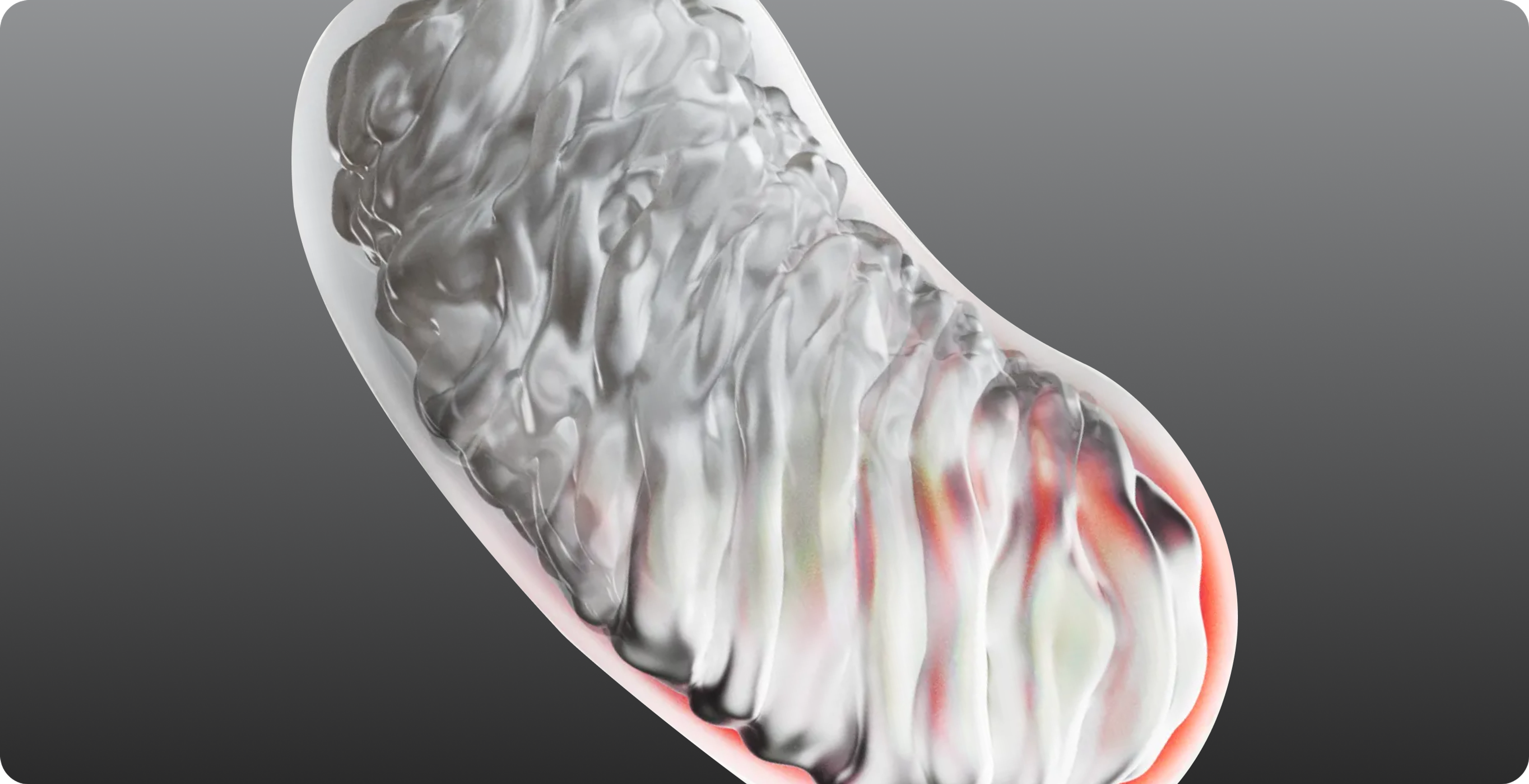
Mitochondrial dysfunction
Metabolic changes occur in aging muscles due to mitochondrial dysfunction, the energy creators in our cells. As we age, mitochondrial function naturally declines, leading to less energy production in the cell[5], which can impair muscle performance and accelerate muscle loss.[6]
However, this decline is not solely due to aging—it is also influenced by several key factors, including oxidative stress, reduced mitochondrial recycling capabilities (mitophagy), and less creation of new mitochondria (a process called biogenesis).[7]
Hormonal changes
Several hormone changes occur with age that contribute to muscle loss. Hormones that promote muscle growth and function, such as testosterone, estrogen, growth hormone, and insulin-like growth factor-1 (IGF-1), decline over time. Decreased levels of vitamin D (which functions as a hormone) and thyroid hormones can also play a role.[8]
Other hormones are increased, such as cortisol (the stress hormone)[10] and angiotensin II (a hormone that raises blood pressure), which can accelerate age-associated muscle loss.[9]
Increased insulin resistance
Insulin resistance is when the body’s cells become less responsive to insulin, the hormone that regulates blood sugar levels. Skeletal muscle is the main target for insulin, so it is not surprising that there is a relationship between aging muscle and the body’s sensitivity to this key metabolic hormone. [11]
Research is ongoing to fully understand the link between insulin resistance and sarcopenia.[12]

How to Stop Age-Related Muscle Loss
Healthy lifestyle changes can halt age-related muscle loss and help you regain muscle strength.
Nutrition
Eating a balanced diet rich in protein, omega-3 anti-inflammatory fats, and vitamin D can build and strengthen muscles.
Protein-rich foods like chicken, fish, tofu, eggs, and non-fat dairy provide amino acids, which are the building blocks for muscle tissue. While the RDA for protein is 0.8g/kg of body weight, many organizations, including the American Academy of Dietetics and the American College of Sports Medicine, suggest that older and active people would benefit from more protein at rages of 1.2–2.0 g/kg/ a day.[13]
Research suggests that omega-3 fatty acids—anti-inflammatory fats found in fatty fish like salmon, as well as in walnuts and chia seeds—may play a role in supporting muscle health. In particular, studies indicate that supplementing with 2 grams of omega-3s per day may help enhance muscle growth, strength, and performance in older adults.[14]
While vitamin D is often thought of as a nutrient to support bone health, research suggests it also plays a critical role in the health of our muscles. Data has shown that people deficient in vitamin D are at higher risk of developing sarcopenia and that people who supplement with vitamin D have a lower risk of falls and better muscle strength.[15]
Prioritize eating these muscle-building foods with meals to ensure you get enough in at the end of the day.
Exercise
Exercise is a necessary complement to a nutritious diet. Combining aerobic and strength training exercise protects muscles, bones, and joints and contributes to healthier muscles as you age.[16]
Strength training, in particular, plays a crucial role in preserving muscle mass, improving strength, and enhancing metabolic health. It stimulates muscle protein synthesis, helping to counteract age-related muscle loss (sarcopenia) while also improving insulin sensitivity and reducing inflammation.[17]
These exercises help support energy production in the mitochondria to fuel energy levels. Performing these exercises regularly while eating enough protein can promote muscle performance and overall longevity.
While any exercise is beneficial in reducing muscle loss with age, the best exercise is one you enjoy so you’ll keep coming back for more.
Dietary supplements
Supplements can play a supportive role in reducing muscle loss with aging, either through promoting mitochondrial health or targeting some of the other underlying causes of sarcopenia.
Mitopure® is a clinically validated Urolithin A supplement that can support the health of your mitochondria and your muscles. Clinical trials have demonstrated its ability to enhance mitochondrial gene expression and improve muscle function in older adults, even in the absence of resistance training.[18]
Clinical trials with Mitopure have demonstrated it’s ability to
- Significantly improve cellular energy production[19]
- Improve muscle strength in four months with 500 mgs[20]
- Improve muscle endurance in two months with 1000 mgs[21]

Mitopure Softgels
4.5 · 3734 reviews
The simplest form of Mitopure
Other supplements that may help combat age-related muscle loss include omega-3 fatty acids, vitamin D, and creatine.
Hormone replacement
Some research suggests a beneficial effect of estrogen therapy in women and testosterone therapy in men[22] for increasing muscle size and strength. [23] However, the results are mixed with these therapies, and they don’t always make a difference.
The risks and benefits of any supplement or hormone therapy should be discussed with a trained healthcare professional before use.
Takeaway
No matter your age, it’s never too early or too late to make muscle health a priority. Speak to your doctor, local gym, or exercise physiologist and ask to have your body composition, which includes your muscle mass, measured and analyzed. Knowledge is power and is the first step to understanding the best ways to improve your health and longevity.
If you’re unsure where to start, pick one muscle-promoting lifestyle change that feels the easiest to ease into, such as diet, exercise, or trying muscle health-supporting supplements like Mitopure. Just one small step compounds into big results over time.

Authors

Written by
Dietitian-Nutritionist, and Health Content Writer

Reviewed by
Director Science Communications
References
- ↑
Wilkinson DJ, Piasecki M, Atherton PJ. The age-related loss of skeletal muscle mass and function: Measurement and physiology of muscle fibre atrophy and muscle fibre loss in humans. Ageing Research Reviews. 2018;47:123-132. doi:https://doi.org/10.1016/j.arr.2018.07.005
- ↑
"Physical Activity Among Adults Aged 18 and Over: United States, 2020." Centers for Disease Control and Prevention, 30 Aug. 2022, www.cdc.gov/nchs/products/databriefs/db443.htm (https://www.google.com/url?q=http://www.cdc.gov/nchs/products/databriefs/db443.htm&sa=D&source=docs&ust=1738876248215185&usg=AOvVaw0LcibAujaTqKKluTBV_ISx). Accessed 31 Jan. 2025.
- ↑
Cleveland Clinic. Hypochlorhydria (Low Stomach Acid): Symptoms, Tests, Treatment. Cleveland Clinic. Published June 27, 2022. https://my.clevelandclinic.org/health/diseases/23392-hypochlorhydria
- ↑
Wayne W Campbell, Nicolaas E P Deutz, Elena Volpi, Caroline M Apovian, Nutritional Interventions: Dietary Protein Needs and Influences on Skeletal Muscle of Older Adults, The Journals of Gerontology: Series A, Volume 78, Issue Supplement_1, June 2023, Pages 67–72, https://doi.org/10.1093/gerona/glad038
- ↑
Somasundaram I, Jain SM, Blot-Chabaud M, et al. Mitochondrial dysfunction and its association with age-related disorders. Front Physiol. 2024;15:1384966. Published 2024 Jul 2. doi:10.3389/fphys.2024.1384966
- ↑
Grevendonk, L., Connell, N.J., McCrum, C. et al. Impact of aging and exercise on skeletal muscle mitochondrial capacity, energy metabolism, and physical function. Nat Commun 12, 4773 (2021). https://doi.org/10.1038/s41467-021-24956-2
- ↑
De Gaetano, A., Gibellini, L., Zanini, G., Nasi, M., Cossarizza, A., & Pinti, M. (2021). Mitophagy and Oxidative Stress: The Role of Aging. Antioxidants, 10. https://doi.org/10.3390/antiox10050794 (https://www.google.com/url?q=https://doi.org/10.3390/antiox10050794&sa=D&source=docs&ust=1738876248216893&usg=AOvVaw1Ofe-6wQo74KNKd0-nFf9M).
- ↑
Priego T, Martín AI, González-Hedström D, Granado M, López-Calderón A. Role of hormones in sarcopenia. Vitam Horm. 2021;115:535-570. doi:10.1016/bs.vh.2020.12.021
- ↑
Priego T, Martín AI, González-Hedström D, Granado M, López-Calderón A. Role of hormones in sarcopenia. Vitam Horm. 2021;115:535-570. doi:10.1016/bs.vh.2020.12.021
- ↑
https://www.timeline.com/blog/taming-the-stress-hormone-cortisols-impact-on-well-being
- ↑
Liu, Zj., Zhu, Cf. Causal relationship between insulin resistance and sarcopenia. Diabetol Metab Syndr 15, 46 (2023). https://doi.org/10.1186/s13098-023-01022-z
- ↑
Liu, Zj., Zhu, Cf. Causal relationship between insulin resistance and sarcopenia. Diabetol Metab Syndr 15, 46 (2023). https://doi.org/10.1186/s13098-023-01022-z
- ↑
Carbone JW, Pasiakos SM. Dietary Protein and Muscle Mass: Translating Science to Application and Health Benefit. Nutrients. 2019;11(5):1136. Published 2019 May 22. doi:10.3390/nu11051136
- ↑
Huang YH, Chiu WC, Hsu YP, Lo YL, Wang YH. Effects of Omega-3 Fatty Acids on Muscle Mass, Muscle Strength and Muscle Performance among the Elderly: A Meta-Analysis. Nutrients. 2020;12(12):3739. Published 2020 Dec 4. doi:10.3390/nu12123739
- ↑
Uchitomi R, Oyabu M, Kamei Y. Vitamin D and Sarcopenia: Potential of Vitamin D Supplementation in Sarcopenia Prevention and Treatment. Nutrients. 2020;12(10):3189. Published 2020 Oct 19. doi:10.3390/nu12103189
- ↑
Beaudart C, Dawson A, Shaw SC, et al. Nutrition and physical activity in the prevention and treatment of sarcopenia: systematic review. Osteoporos Int. 2017;28(6):1817-1833. doi:10.1007/s00198-017-3980-9
- ↑
Brook, M., Wilkinson, D., Mitchell, W., Lund, J., Phillips, B., Szewczyk, N., Greenhaff, P., Smith, K., & Atherton, P. (2016). Synchronous deficits in cumulative muscle protein synthesis and ribosomal biogenesis underlie age‐related anabolic resistance to exercise in humans. The Journal of Physiology, 594, 7399 - 7417. https://doi.org/10.1113/JP272857 (https://www.google.com/url?q=https://doi.org/10.1113/JP272857&sa=D&source=docs&ust=1738876248205152&usg=AOvVaw3DG8SJfbDUAviiesHrJi22).
- ↑
Liu S, D'Amico D, Shankland E, et al. Effect of Urolithin A Supplementation on Muscle Endurance and Mitochondrial Health in Older Adults: A Randomized Clinical Trial. JAMA Netw Open. 2022;5(1):e2144279. Published 2022 Jan 4. doi:10.1001/jamanetworkopen.2021.44279
- ↑
Andreux, P.A., Blanco-Bose, W., Ryu, D. et al. The mitophagy activator urolithin A is safe and induces a molecular signature of improved mitochondrial and cellular health in humans. Nat Metab 1, 595–603 (2019). https://doi.org/10.1038/s42255-019-0073-4 (https://www.google.com/url?q=https://doi.org/10.1038/s42255-019-0073-4&sa=D&source=docs&ust=1738876248207854&usg=AOvVaw1D6Y0fuDuKtUozh2GzNNqn)
- ↑
Singh A, D'Amico D, Andreux PA, Fouassier AM, Blanco-Bose W, Evans M, Aebischer P, Auwerx J, Rinsch C. Urolithin A improves muscle strength, exercise performance, and biomarkers of mitochondrial health in a randomized trial in middle-aged adults. Cell Rep Med. 2022 May 17;3(5):100633. doi: 10.1016/j.xcrm.2022.100633. PMID: 35584623; PMCID: PMC9133463.
- ↑
Liu S, D’Amico D, Shankland E, et al. Effect of Urolithin A Supplementation on Muscle Endurance and Mitochondrial Health in Older Adults: A Randomized Clinical Trial. JAMA Netw Open. 2022;5(1):e2144279. doi:10.1001/jamanetworkopen.2021.44279
- ↑
Critchlow AJ, Hiam D, Williams R, Scott D, Lamon S. The role of estrogen in female skeletal muscle aging: A systematic review. Maturitas. 2023;178:107844-107844. doi:https://doi.org/10.1016/j.maturitas.2023.107844
- ↑
Yabluchanskiy A, Tsitouras PD. Is Testosterone Replacement Therapy in Older Men Effective and Safe?. Drugs Aging. 2019;36(11):981-989. doi:10.1007/s40266-019-00716-2
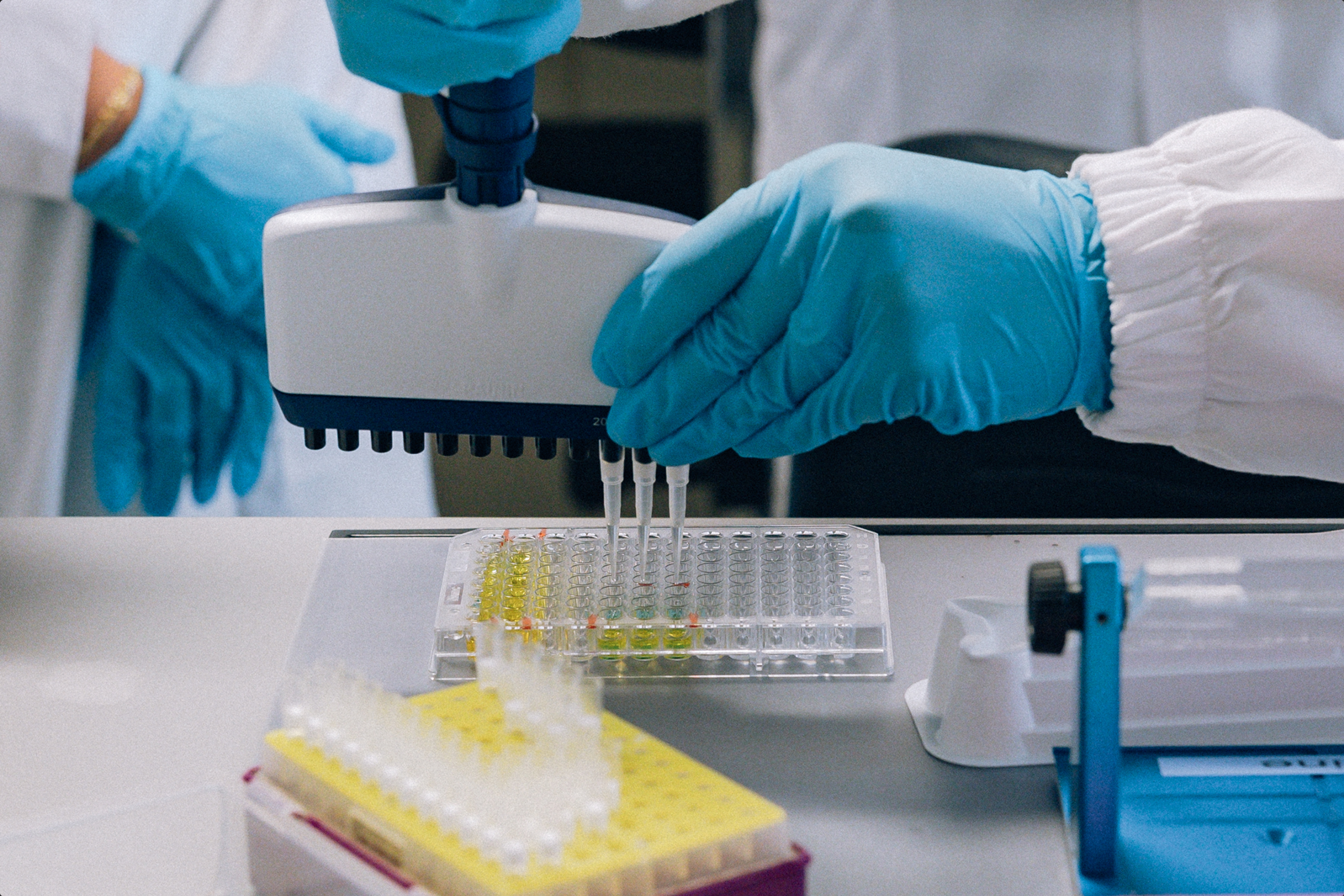
·
Nutrition·
Studies·
